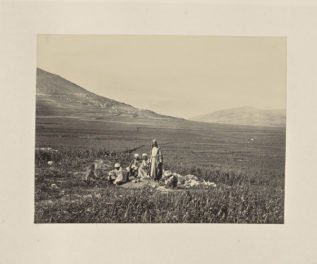
Mario Ybarra, Jr., delivering his keynote at the Getty
Los Angeles artist Mario Ybarra Jr. visited the Getty this summer to speak to 107 interns gathered for Arts Summit. This annual event, organized by the Getty Foundation for its Multicultural Undergraduate Internship Program, offers a day of talks and community for Getty interns considering careers in the arts. And every year, a different leader from the city’s arts community offers a rousing and inspiring keynote.
In this year’s talk, Mario shared the six steps of a creative process essential to his successful career as an artist. He explained this process by putting it in context of the time he baked a chocolate cake for his mom’s birthday under the pressure of having to top the cake his sister had baked the year before.
The six steps in any a creative process, he said, are:
- intent
- content
- context
- production
- distribution
- documentation
His intent was to bake an amazing cake. The content was a chocolate cake, and the context was the need to celebrate his mother’s birthday. For the production phase, he found a recipe, bought the ingredients, and assembled the cake. The next step was distribution, when he had to present the cake to his family and convince them it was amazing. Finally, there was documentation, as he had to leave proof that he had made, if not an amazing cake, at least some kind of cake.
Along the way, Mario brought out the inner third-grader in all of us as he had us outline our hands on a sheet of paper, like a Thanksgiving turkey hand. On each of the four wings, the head, and the belly, Mario instructed us to outline the six steps of his creative process. The diagram acts as a memory aid and reminds us that each of our hands, literally and symbolically, is unique.
Though he simplified the six steps through his cake-baking story to show that they could be applied to everyday problem solving, Mario’s main point was that this was a process that an artist should follow every day. He stressed the importance of not only creating great work that has intent, content, and context, but also promoting one’s work and purpose as an artist to the outside world through production, distribution, and documentation. And when you got to the end of the process, documentation acts as a springboard to start the next artwork.
It is possible to be at different points in this process on a daily basis; one moment we can be at intent (why am I here?) and another at distribution (how can I let it be known that I am here and what my purpose is).

Mario Ybarra Jr.’s six steps in the creative process, visualized as a hand turkey by intern Diane Lee
Our individual “turkey hands,” which we each took home from the day, remind us not only of Mario’s inspiring words but also that each of our hands, but also the distinct touch each of us brings to everything we do. It was a perfect message for the interns in the audience, who represent many different backgrounds and have been working at a wide variety of arts organizations and museums across L.A. County. Our diverse experiences make up the unique fabric of the Multicultural Undergraduate Internship program, which now has over 3,000 alumni, each of whom contributes to an extraordinary narrative and legacy.




Comments on this post are now closed.
Trackbacks/Pingbacks